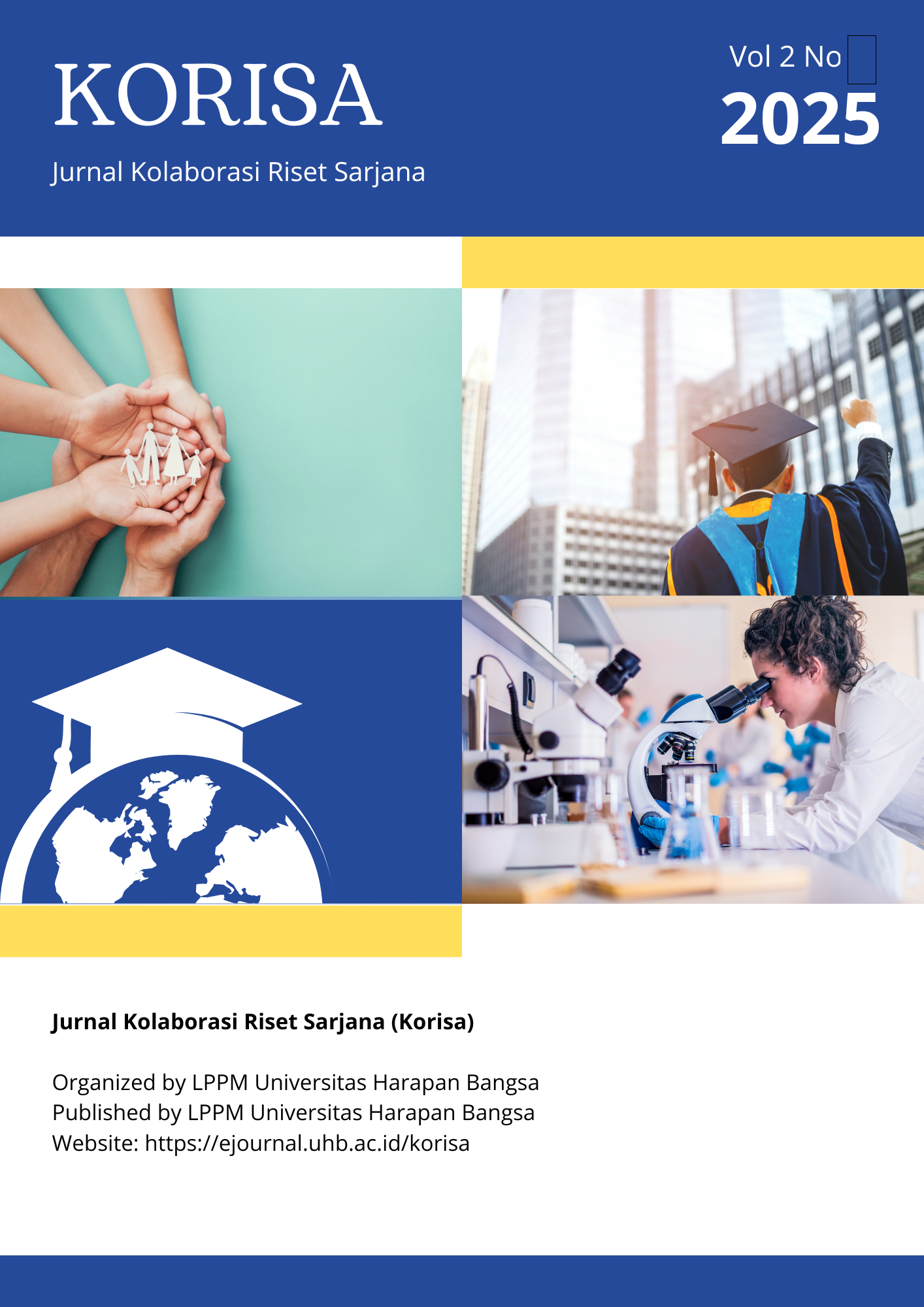Smartphone dan Perkembangan Kognitif Anak Usia Dini: Studi di Desa Ledug, Banyumas
Keywords:
child, cognitive development, intensity, smartphoneAbstract
Toddlers between the ages of one and three undergo a crucial phase of rapid growth and development, including cognitive enhancement. Smartphone usage can influence cognitive development, the process by which children acquire thinking skills. The utilization of smartphones may have both beneficial and adverse effects on cognitive development. This study is to investigate the relationship between cognitive development in children aged one to three and their smartphone usage in Ledug Village, Banyumas Regency. This research is categorized as cross-sectional correlational investigation. The study's population consisted of 65 toddlers from Posyandu Margo Sari in Ledug Village. Methodology for intentional sampling utilizing inclusion and exclusion criteria. The Capute Scale evaluates cognitive development, whereas the study's independent variable is the degree of an individual's smartphone utilization. Data processing includes editing, coding, scoring, tabulating, and doing Spearman Rank test analysis. Of the 37 respondents, the majority (18, or 49%) indicated moderate to heavy smartphone usage, while a larger majority (21, or 57%) reported assessing the results of presumed cognitive enhancement. The results of the Spearman's Rho Rank correlation test indicate a positive correlation and moderate degree of connection, resulting in the rejection of H0, with a p-value of 0.003 (p-value < 0.05; Rho = 0.481). The study's findings indicate a relationship between the extent of smartphone usage and cognitive development in children aged 1 to 3. Parents should oversee and regulate their children's smartphone usage to prevent negative consequences.References
Alawiyah. (2021). Hubungan Penggunaan Gadget dengan Kognitif Anak Usia Sekolah Dasar di SD Muhammadiyah 5 Samarinda. Borneo Student Research, 3(1), 300–309. https://journals.umkt.ac.id/index.php/bsr/article/download/2461/1013
Badan Pusat Statistik, N. (2022). Persentase Anak Usia Dini yang Menggunakan Telepon Seluler dan Mengakses Internet. https://bps.go.id/
Bujuri, D. A. (2019). Analisis Perkembangan Kognitif Anak Usia Dasar dan Implikasinya dalam Kegiatan Belajar Mengajar. LITERASI (Jurnal Ilmu Pendidikan), 9(1), 37. https://doi.org/10.21927/literasi.2018.9(1).37-50
Hartanto, W. S. (2019). Deteksi Keterlambatan Bicara dan Bahasa Pada Anak. Cermin Dunia Kedokteran, 545–266.
Ifalahma, D., & Retno, Z. (2023). Faktor Perkembangan Motorik Dan Perkembangan Kognitif Anak: Literature Review. Jurnal Keperawatan Jiwa (JKJ): Persatuan Perawat Nasional Indonesia, 11(3), 707–714.
Ikhsan, I. (2022). Hubungan Intenistas Penggunaan Smartphone dengan Perkembangan Kognitif Pada Anak Usia 4 – 6 Tahun (Di Taman Kanak – Kanak Bina Insani Desa Candimulyo Kecamatan Jombang Kabupaten Jombang) IHYAHUL. https://medium.com/@arifwicaksanaa/pengertian-use-case-a7e576e1b6bf
Jafri, Y., & Defega, L. (2020). Gadget Dengan Perkembangan Sosial dan Bahasa Anak Usia 3-6 Tahun. Prosiding Seminar Kesehatan Perintis, 3(1), 76–83.
Javier, V., Isabel, A., Herrero-rold, S., Rodriguez-besteiro, S., Mart, I., Mart, A., & Tornero-aguilera, J. F. (2024). Digital Device Usage and Childhood Cognitive Development : Exploring Effects on Cognitive Abilities. 1–27.
Khan, R. I., Dwiyanti, L., Keguruan, F., Nusantara, U., Kediri, P., Pinus, J., Penelitian, J., Pembelajaran, I., Khan, R. I., & Dwiyanti, L. (2022). Persepsi Orang Tua Tentang Penggunaan Smartphone untuk Anak Usia Dini Program Studi Pendidikan Guru Pendidikan Anak Usia Dini bantuan bagi kemudahan dan kepraktisan canggih . Hal ini tampak dari rilisan Inggris yang berarti suatu alat elektronik sendiri s. 8(1), 98–107.
Kusuma, A., Yunitasari, E., Sugiyanto, S., Anggraini, R., & Mukhlis, H. (2022). Hubungan Intensitas Penggunaan Gadget dengan Perkembangan Anak Usia 4-6 Tahun. Jurnal Aisyah : Jurnal Ilmu Kesehatan, 7(S1), 123–128. https://doi.org/10.30604/jika.v7is1.1212
Maulita, I., Ari, S., & Fitria, A. G. (2021). Persepsi Orang Tua terhadap Penggunaan Gadget pada Anak Usia Dini. Journal of the Atomic Energy Society of Japan / Atomic Energy Society of Japan, 49(3), 209–210. https://doi.org/10.3327/jaesj.49.209
Natasha Prasma, E., Siringoringo, L., Hunun Widiastuti, S., & Butarbutar, S. (2022). Tingkat Pertumbuhan dan Perkembangan Anak Usia Toddler di Paud Santa Maria Monica Bekasi Timur. Jurnal Keperawatan Cikini, 2(2), 26–32. https://doi.org/10.55644/jkc.v2i2.78
Novianti, R., & Garzia, M. (2020). Penggunaan Gadget pada Anak; Tantangan Baru Orang Tua Milenial. Jurnal Obsesi : Jurnal Pendidikan Anak Usia Dini, 4(2), 1000. https://doi.org/10.31004/obsesi.v4i2.490
Srinahyanti, S., Wau, Y., Manurung, I., & Arjani, N. (2019). Influence of Gadget: A Positive and Negative Impact of Smartphone Usage for Early Child. 3–5. https://doi.org/10.4108/eai.3-11-2018.2285692
Talango, S. R. (2020). Konsep Perkembangan Anak Usia Dini. Early Childhood Islamic Education Journal, 1(1), 92–105. https://doi.org/10.54045/ecie.v1i1.35
Triansyah, T. (2022). ( Ponsel Pintar ) Dari Masa Ke Masa. Sejarah Smartphone, 12(2).
Wahidah, A. F. N., & Latipah, E. (2021). Pentingnya Mengetahui Perkembangan Bahasa Anak Usia Dini Dan Stimulasinya. (JAPRA) Jurnal Pendidikan Raudhatul Athfal (JAPRA), 4(1), 43–62. https://doi.org/10.15575/japra.v4i1.10940





